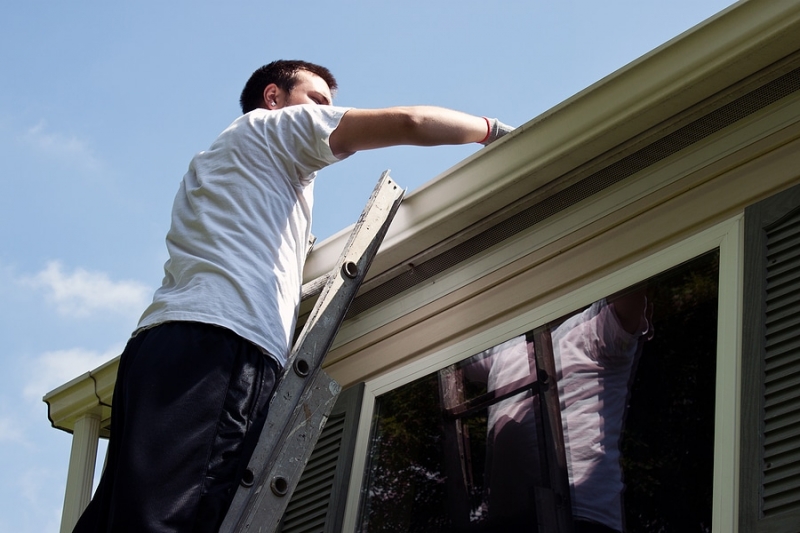How to Maintain Your Seamless Gutters for Optimal Performance?
How to Maintain Your Seamless Gutters for Optimal Performance
Seamless gutters are an essential part of your home’s drainage system, keeping rainwater away from your foundation, siding, and landscaping. Unlike traditional sectional gutters, seamless gutters have fewer weak points, making them less prone to leaks. However, they still require regular maintenance to function efficiently. Neglecting them can lead to clogs, water damage, and costly repairs. In this guide, we’ll walk you through the best ways to maintain your seamless gutters and ensure they last for years to come.
Why Maintaining Seamless Gutters Is Essential
While seamless gutters offer enhanced durability compared to sectional alternatives, they still require consistent maintenance to function optimally. Regular upkeep is crucial for preventing water damage to your home’s foundation, siding, and roof. Additionally, it significantly extends the lifespan of your gutter system, ensuring it continues to protect your property for years to come. Maintaining clean gutters also deters pest infestations by eliminating stagnant water and debris that can attract insects and rodents. Furthermore, well-maintained gutters contribute to your home’s curb appeal, preserving its aesthetic value, and ultimately, save you money on costly repairs that result from neglect.
To keep your seamless gutters in prime condition, a systematic approach to maintenance is essential. This includes regular inspections for any signs of damage, such as cracks, holes, or sagging. Prompt removal of debris, such as leaves, twigs, and dirt, is vital to prevent clogs and ensure proper water flow. Additionally, checking and adjusting the gutter slope and downspout extensions will help direct water away from your foundation. Periodic cleaning, whether manually or with specialized tools, will further enhance the functionality and longevity of your seamless gutter system.
Regular Cleaning
Generally, seamless gutters should be cleaned twice annually, once in the spring and again in the fall, to ensure proper water flow and prevent blockages. However, homeowners residing in areas with abundant tree cover may need to increase the frequency of cleaning to accommodate the higher volume of falling debris. This proactive approach helps maintain the integrity of the gutter system and protect the home from potential water damage.
Various methods can be employed for gutter cleaning, each with its own advantages. A traditional approach involves using a ladder and hand tools, such as gloves and a scoop, to manually remove leaves, twigs, and other debris. Following this, a garden hose can be used to flush out remaining small particles. For more stubborn dirt and grime, a pressure washer can be utilized for a thorough cleaning. Alternatively, gutter cleaning attachments that connect to leaf blowers or pressure washers offer a safer, ground-level cleaning option.
Inspect for Damage and Leaks
Regular gutter inspections should focus on detecting cracks or holes, sagging or pulling away from the house, rust or corrosion, and leaking joints, with common fixes including sealing small cracks with waterproof sealant, reattaching sagging gutters with brackets or fasteners, and replacing extensively rusted sections.
Keep Downspouts Clear
Downspouts divert water away from your home’s foundation, so clogged ones cause gutter overflow and potential damage. Unclog them by flushing debris with a garden hose, breaking up blockages with a plumber’s snake, or, if needed, removing and manually clearing the downspout.
Install Gutter Guards for Extra Protection
To minimize gutter cleaning frequency, installing gutter guards is a practical solution, as these coverings effectively prevent large debris from entering gutters while maintaining free water flow, and various types are available, including screen guards with mesh screens, foam inserts, brush guards with bristle-like inserts, and reverse curve guards designed to divert debris.
Ensure Proper Water Flow and Drainage
Maintaining proper gutter function involves ensuring a slight slope of approximately ¼ inch per 10 feet to effectively direct water towards downspouts, adjusting the pitch if pooling occurs, and extending downspouts at least 3 to 5 feet away from the foundation to prevent erosion and basement leaks, utilizing downspout extenders when needed.
Trim Overhanging Branches
Trees that hang over your roof can drop leaves, twigs, and even large branches into your gutters. Trimming branches reduces the amount of debris that collects in your seamless gutters and minimizes the risk of damage during storms.
Prevent Ice Dams in Winter
Ice dams form when snow melts on a roof and refreezes at the gutter line, creating blockages that lead to damaging leaks. To prevent them, ensure proper attic insulation minimizes heat loss, regularly remove heavy snow buildup with roof rakes, and install heated gutter cables in areas prone to recurring ice dam formation.
Schedule Professional Maintenance When Needed
You can handle many routine gutter issues yourself, but hire a professional in these situations: when gutters are high or hard to reach, when you see persistent leaks or damage, or when you want a comprehensive cleaning and inspection. This ensures proper care and prevents future problems.
Seamless Gutters for Your Home
Seamless gutters are a low-maintenance but crucial part of your home’s exterior. With regular cleaning, inspections, and minor repairs, you can keep them in top shape and avoid costly problems down the road. Whether you tackle maintenance yourself or hire a professional, taking care of your gutters will protect your home and ensure they perform optimally for years to come.



 Send Email
Send Email rainny
rainny